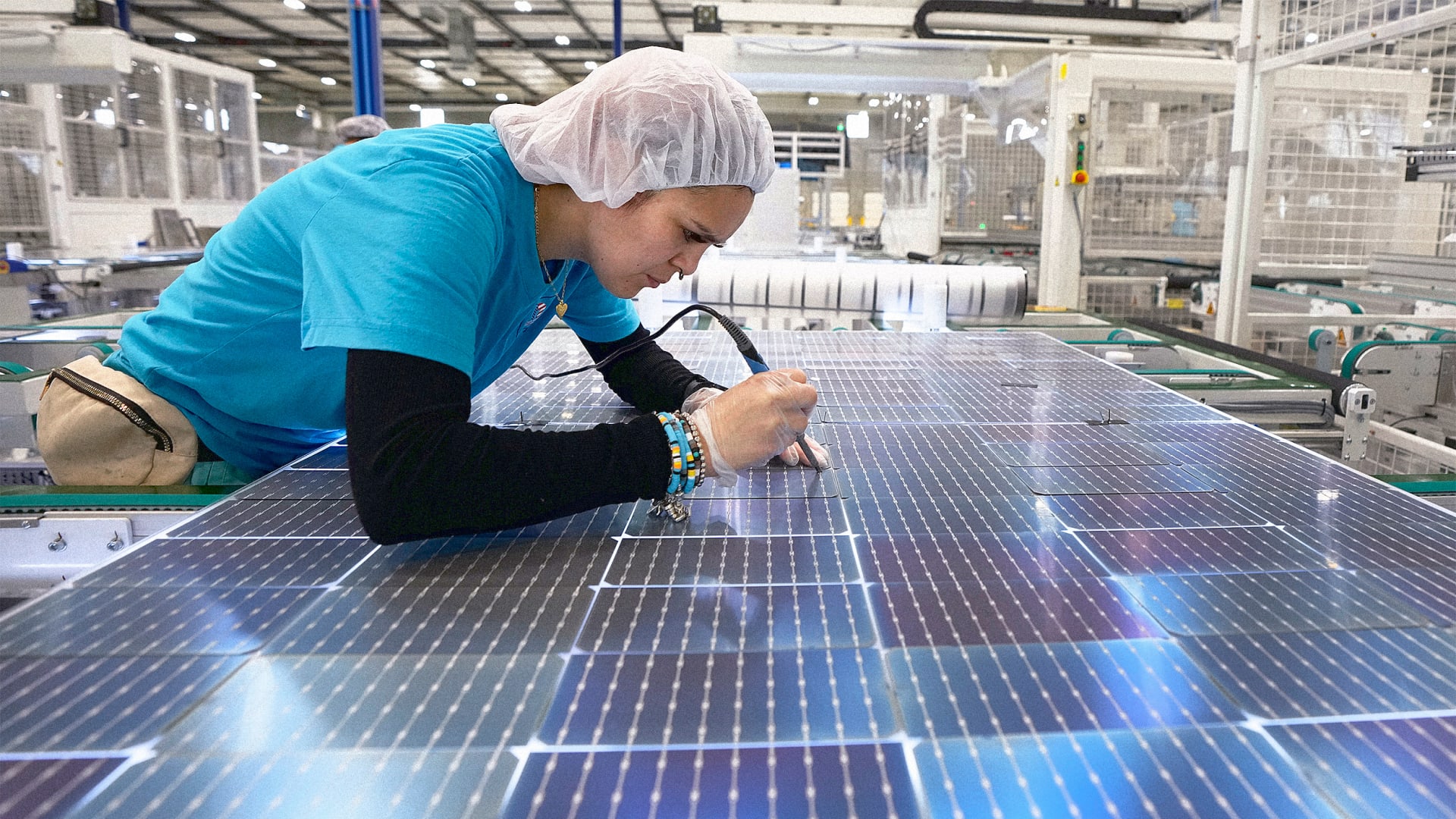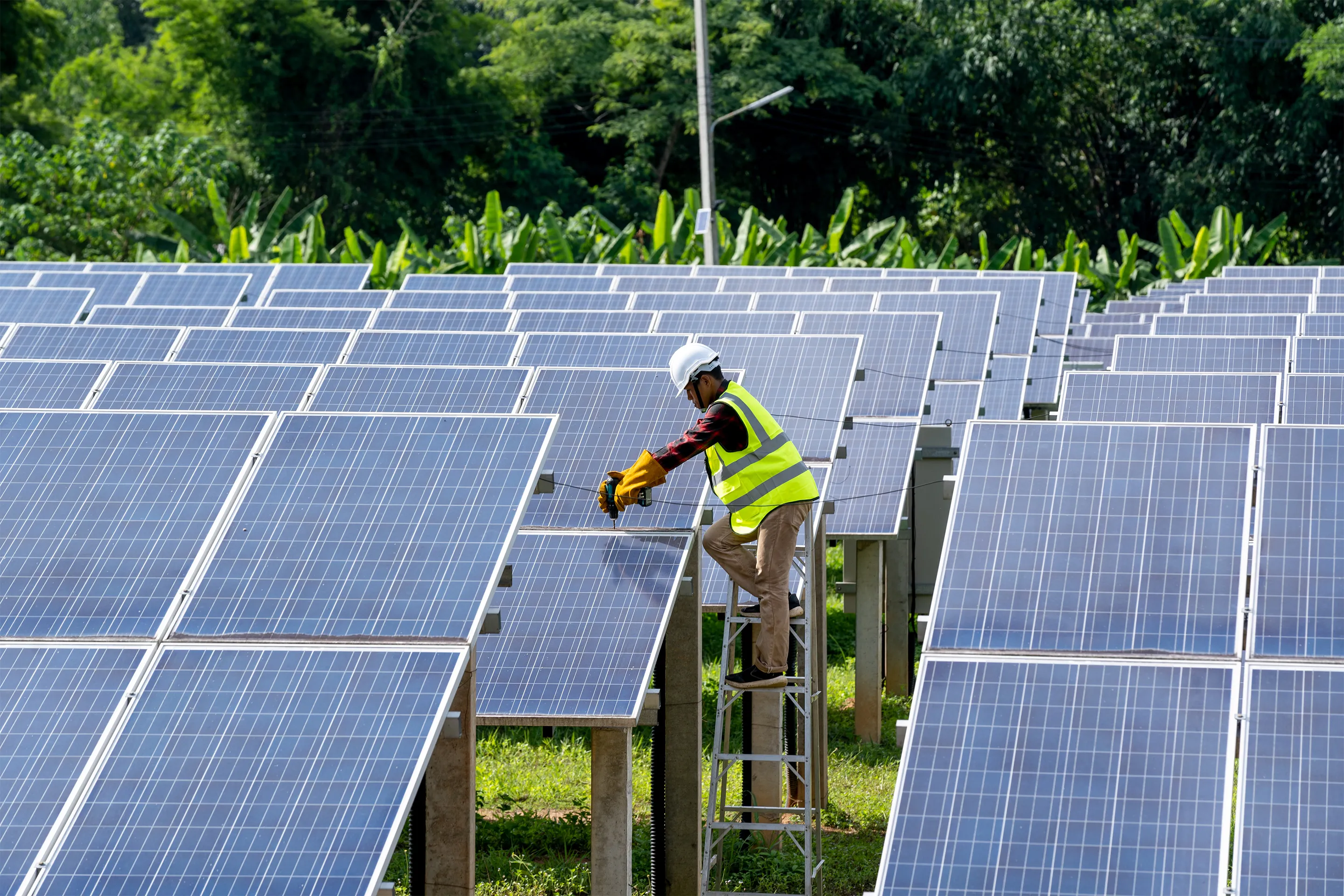The Ultimate Guide To Commercial Solar Panels Virginia
The Ultimate Guide To Commercial Solar Panels Virginia
Blog Article
Virginia Solar Panel Tax Credit: Lumina Solar Focuses On Supplying Advanced Photovoltaic Solutions For Homes And Companies
History and Establishing
Have you ever questioned how a solar panel business springs from a simple spark of inspiration into a powerhouse of renewable resource? It often more info starts with a vision-- one fueled by a blend of development, decision, and a pinch of serendipity. The journey of numerous solar business mirrors the development of the technology itself: from bulky, ineffective panels to sleek, high-efficiency marvels utilizing the sun's bounty.
The Early Days
In the late 20th century, when solar power was still a specific niche principle, pioneers planted seeds for what would become a global movement. Imagine a small workshop filled with curious engineers, relentlessly explore photovoltaic cells. Their passion was palpable, frequently driven by a desire to combat climate change and reduce reliance on fossil fuels.
One such anecdote is about a founder who, motivated by an outdoor camping journey, understood that even in remote locations, the sun might power essential gadgets. This basic observation sparked a business's mission to equalize access to clean energy.
Founding Concepts

- Innovation: Continuously pressing the boundaries of solar innovation to enhance effectiveness and toughness.
- Sustainability: Committing to eco-friendly manufacturing and reducing carbon footprints.
- Availability: Making renewable energy options cost effective and practical for daily users.
Milestones in Growth
| Year | Key Occasion |
|---|---|
| 1985 | Company established in a little garage, focusing on research study and development. |
| 1995 | First commercial solar panel product introduced, gaining regional attention. |
| 2005 | Broadened to worldwide markets, welcoming global eco-friendly energy objectives. |
| 2015 | Introduced innovative photovoltaic panel innovation with boosted energy conversion. |
Isn't it interesting how these incremental actions, typically overlooked, shape the energy landscape today? The solar panel company story is not almost technology; it has to do with an unrelenting quest for a brighter, cleaner future.

Developments in Solar Panel Technologies
Ever observed how some photovoltaic panels shine brighter and last longer? It's not magic; it's the science of photovoltaic efficiency. Modern photovoltaic panel companies invest greatly in technologies like bifacial cells, which record sunshine from both sides, boosting energy harvest without expanding roof area. Have you ever questioned why some panels carry out better on cloudy days? That's due to advances in thin-film solar technology, which grows under diffused light conditions.
Item Variations Tailored to Unique Needs
One size never ever fits all. Photovoltaic panel service providers now offer:
- Monocrystalline panels for optimum efficiency and sleek visual appeals, perfect for space-constrained roofs.
- Polycrystalline panels, which provide a cost-efficient alternative without sacrificing too much output.
- Building-integrated photovoltaics (BIPV), merging solar tech perfectly into architectural elements like windows and facades.
Selecting the right product isn't practically in advance cost; it's about matching your environment, energy objectives, and long-lasting cost savings. For example, homes shaded by trees require panels that master low-light scenarios, something lots of overlook until energy costs climb up suddenly.
Technical Tips for Ideal Selection
- Assess the temperature level coefficient-- lower worths suggest panels lose less efficiency on hot days.
- Look for panels with enhanced anti-reflective coverings to optimize light absorption.
- Consider the panel's guarantee not just for defects, however for guaranteed power output over years.
- Don't ignore the importance of the inverter innovation coupled with the panels; it can make or break your system's performance.
Beyond Panels: Emerging Trends
Picture solar panels that change their angle automatically to chase the sun-- tracking systems are becoming more accessible, increasing yield substantially. Or solar tiles that blend invisibly into your roofline, changing your home into a silent, self-dependent power generator. These innovations are improving what a solar panel business offers-- not simply products, but integrated energy options.
Market Existence and Global Operations
Ever wonder why some photovoltaic panel companies appear to grow up in every corner of the world while others hardly make a ripple? The difference lies not just in innovation but in mastering the art of navigating varied markets. Broadening worldwide is like planting seeds in various climates-- you should understand each environment's unique conditions to flourish.
Take, for example, the detailed dance of logistics and supply chain management. Shipping panels halfway throughout the world isn't just about distance; it's about timing, custom-mades, tariffs, and adapting to regional demand changes. A business with robust international operations prepares for these variables, making sure panels get here on schedule without inflating costs. This insight is no little feat and often separates market leaders from fans.
Secret Techniques for Expanding Market Presence
- Localized production: Developing production hubs near target audience decreases shipping hold-ups and import intricacies.
- Strategic collaborations: Working together with local firms accelerates market penetration and develops trust.
- Adaptive product design: Tailoring solar panel tech to weather, sun intensity, and infrastructure nuances improves efficiency and approval.
What about the human element? Solar panel companies operating globally must reconcile cultural distinctions and regulative subtleties without losing sight of their core mission. What works in a sun-drenched desert may fail in a humid coastal area. Often, the most ingenious service is just listening-- soaking up local insights to fine-tune technology and technique.
Specialists typically encourage a phased rollout rather than a shotgun growth. Why run the risk of overextension when measured development develops sustainable momentum? Scaling carefully implies balancing ambition with operational resilience - Commercial Solar Panels Virginia. After all, in the race for sustainable energy dominance, perseverance can be as important as speed
Environmental Impact and Sustainability Practices
When solar panels first emerged, numerous presumed they brought no ecological baggage. The reality is more nuanced. The production of solar batteries involves uncommon earth metals and energy-intensive processes, which can leave a substantial carbon footprint before the panels even reach rooftops. Yet, the true ecological expense depends heavily on the sustainability practices utilized by the photovoltaic panel business throughout the lifecycle of their items.
How often do we stop briefly to consider what takes place to photovoltaic panels at the end of their beneficial life? Unlike batteries or electronics, photovoltaic panels can last 25-30 years, but disposal and recycling pathways stay underdeveloped in many regions. A business dedicated to minimizing ecological damage will have a robust prepare for recycling photovoltaic materials, salvaging valuable silicon, glass, and metals to avoid garbage dump accumulation.
Secret Sustainability Methods
- Making use of low-impact production techniques that minimize water and energy intake.
- Implementing closed-loop systems to recycle production waste back into brand-new panels.
- Participating in transparent supply chain audits to ensure ethical sourcing of basic materials.
- Designing panels for easier disassembly to help future recycling efforts.
It deserves noting that some solar business have actually pioneered innovative techniques, such as integrating naturally degradable elements or using less poisonous chemicals throughout fabrication. This not only minimizes environmental pressure however likewise sets a precedent for the market. The concern remains: can the solar industry really pivot towards a circular economy model without compromising effectiveness or price?
Specialist Tips for Examining Sustainability
- Inquire about the business's dedication to carbon-neutral manufacturing and whether they balance out emissions.
- Investigate if they partner with accredited recycling facilities devoted to photovoltaic panel waste.
- Search for openness reports detailing ecological impacts and sustainability goals.
- Consider the longevity and warranty of panels as an indirect procedure of resource performance.
In the end, choosing for solar energy ought to indicate more than just slashing electrical power expenses; it has to do with nurturing a future where energy is gathered properly and waste is thoughtfully handled. Solar panel companies that accept this approach not just illuminate homes but also cast a brighter light on sustainable innovation.
Report this page